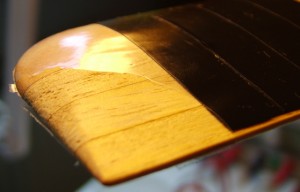Place: Halle
Tanks flown: 4
Time flown: 1h00 (cumulative model timer: 28h56)
Rx battery recharged with: 1373 mAh (but more than 2 hours after the last flight)
Tx battery recharged with: 459 mAh
Glow heater battery recharged with: 193 mAh
Starter battery recharged with: 30 mAh
Comment:
Another beautiful day at the field, although the wind was gusty.
Practiced autorotations a lot. I’m mostly following this guide: try to land with less and less power available. I started out at 30%. The last attempt was at 15% power.
I’m a bit surprised how rough you can land the Raptor 50. Just make sure that you don’t have sideways or backward motion, as it might tip over or bend the tail boom.


